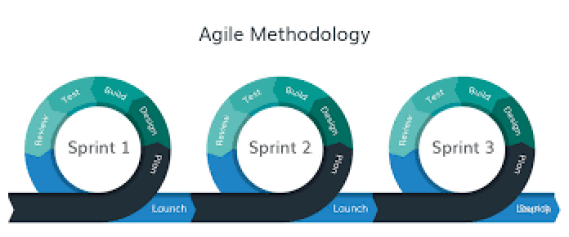The need for product development (hyper) speed is paramount. The average time to design a new car has fallen from 4 years to less than 2 years. Zara is able to mimic a runway design and get it to store shelves in 4-6 weeks. Ultra fast fashion is now eating fast fashion. To survive in this fast-eats-the-slow world, CEOs, operations and product development leaders are in a race to be the first to market, or a fast follower, or at least be in the race to be the third.
Thanks to abundance of paid advice from management consultants and free advice (including this one) on the Internet you cannot fault CEOs, operations and product leaders for being thoroughly confused about what they should do to improve product development speed. Thankfully, for serious product development related to things that have to work and perform reliably for a long period of time, the choice usually narrows down to Waterfall, Phase-gate, Concurrent Engineering, and more recently Agile development.
Waterfall Model
Other than the picture looking like a waterfall we are not really sure that any product development methodology strictly follows a waterfall methodology. Even a highly siloed organization will find it hard to follow this model.
Concurrent Engineering
Concurrent engineering is a more reasonable approach for cross-functional product development and it has the potential to reduce product development duration considerably and achieve product development speed.
Stage-gate Product Development
Stage-gate is a mix of sequential and concurrent modes of product development. You can get a good overview of phase-gate approach here.
Accelerating Product Development via Phase-gate Processes
Each phase or stage is defined in terms of principle scope, objectives, activities and deliverables, as well as functional responsibilities. Further, each stage leads into a gate, which defines the specific criteria and results that must be met for the project to succeed in the next stage and beyond. If designed properly, these gates validate through multifunctional reviews, all necessary “conditions for future success.”
Agile Methodology
Agile product development methodology is the new kid on the block and yet it is over 20 years old. The roots of agile methodology are in software development. We are not sure that it is a great model for development of complex (hardware+electronics+firmware+software) connected systems. The picture below represents the agile development methodology that has broken the overall product development program into different sprints.
New Product Introduction workflows in ZFlow
Waterfall
The waterfall model of product development can be supported in ZFlow using the sequential workflow model as shown below. In the below scenario workflow activities representing different stages of waterfall product development are performed sequentially.
Stage-gate
ZFlow provides an innovative and effective workflow for supporting stage-gate oriented workflows using a project type of activity as part of the workflow. It is possible to execute a full-fledged project as a workflow activity. That project phase is then followed by a review/approval gate in the workflow before the next phase of the project becomes active. Below shows a stage-gate approach for Supplier APQP.
Concurrent Engineering
Concurrent Engineering in ZFlow can be supported using sub-processes or project type workflow activities.





